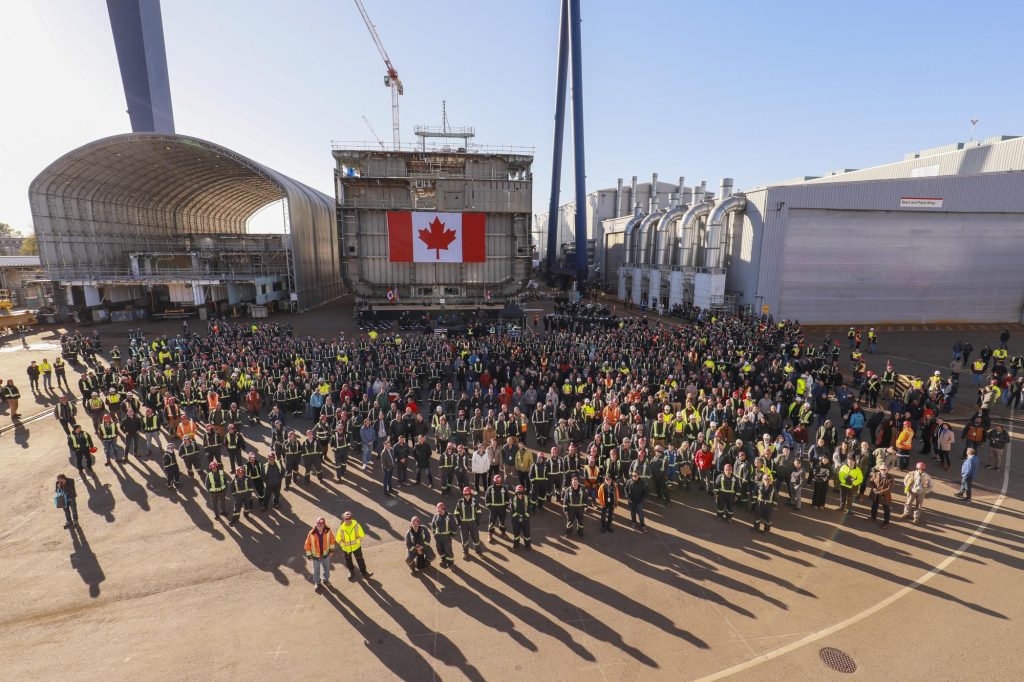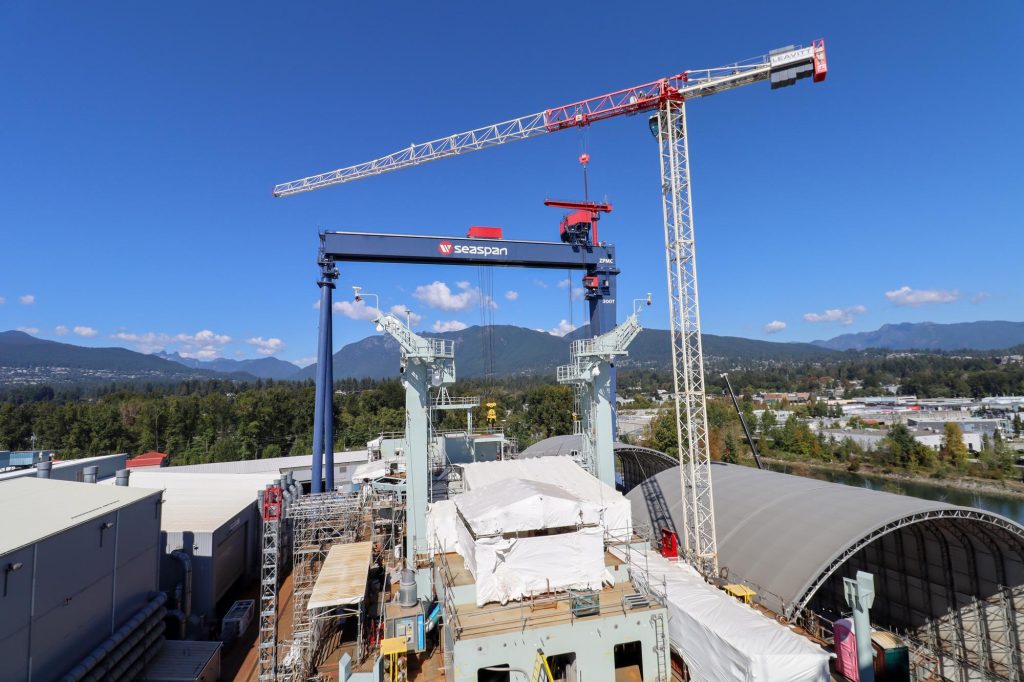
Future Protecteur-class Joint Support Ships provide vital capability
By RCN
The longest ship ever built in Canada, at close to 174 metres in length, the future Protecteur-class Joint Support Ships (JSS) will provide core replenishment, limited sealift capabilities and support to operations ashore for the Royal Canadian Navy (RCN).
The two new ships are currently under construction with the first, future His Majesty’s Canadian Ship (HMCS) Protecteur, expected to be delivered to the RCN in 2025. Protecteur will be the lead ship of the class, and the second will be named HMCS Preserver. Protecteur will remain on the West Coast, with Preserver destined for Halifax.
According to Commander (Cdr) Brian Henwood, Project Director JSS, the hull of the first ship is now structurally complete with the recent instalment of replenishment-at-sea posts. The ship’s crew have begun being posted, with most of the crew expected to arrive in summer 2024.
The second JSS, future HMCS Preserver, commenced assembly in 2022 and presently has 43 of 115 blocks now under construction. A keel laying ceremony hosted by Seaspan is taking place on October 27 and represents a significant milestone in the construction of the ship as it marks the “birth” of the vessel. As part of the ceremony, a newly minted coin is laid near the keel where it remains for the life of the vessel and is thought to bring the ship and crew good luck.
“JSS brings a critical capability that will allow the RCN to operate around the world without the need to rely on partner nations or port visits in other countries,” explains Cdr Henwood.
“It will be a key enabler of the Government of Canada’s ability to operate in the Indo-Pacific theatre of operations and will support allied and partner nations working alongside the RCN such as NATO or Combined Maritime Forces.”
As with most naval supply ships, capabilities of the JSS include providing fuel, food, supplies, water, maintenance and medical support.
“But they can do so much more,” says Cdr Henwood.
With a full Combat Management System and Communications Suite, JSS will be capable of participating in any fight, using its robust sensors including 3D Air Search Radar and Links 16 and 22 (encrypted, jam-resistant tactical data links) to support and develop the common operating picture. They will also be capable of embarking Task Group Command Staff and have all required Command, Control, Communications, Computers, Intelligence, Surveillance and Reconnaissance systems to support the Task Group Commander.
The ships will be armed with two close-in weapons systems (CWIS), four naval remote weapons systems and four manual .50 calibre heavy machine guns. In addition, the ship is fitted with a Nixie Towed Torpedo Decoy system, a chemical, biological, radiological and nuclear (CBRN) detection and monitoring system, and CBRN citadel and filtration systems.
They will have significant magazines allowing them to carry re-supply ammunition, including missiles and torpedoes, for the fleet and will also be capable of embarking up to two CH-148 Cyclone helicopters with hangar facilities to conduct second-line maintenance of fleet helicopters.

JSS can carry up to 60, 20-foot-long containers. Other future RCN fleet ships, including Canadian Surface Combatants (CSC) and Arctic Offshore Patrol Vessels (AOPV), will also be capable of embarking mission-specific containers.
“It’s feasible that a JSS could carry several types of mission containers and be able to assist a CSC or AOPV in changing roles using containerized mission systems in-theatre vice having to return to our naval bases in Esquimalt, B.C., or Halifax,” Cdr Henwood says.
“JSS will also be a strategic asset capable of supporting strategic sea lift for the Canadian Army and the Royal Canadian Air Force.”
The JSS will also embark the RCN’s new sea-to-shore connectors. These modular self-propelled barges can carry quantities of mission-essential equipment, stores and personnel to and from shore quickly. When not in use they are stored or transported like standard shipping containers and have multiple uses and configurations. They are engineered to be assembled from the JSS itself.
Apart from all the state-of-the-art systems and technologies of a modern naval vessel, the JSS will be home to a core crew of 240 personnel.
The JSS will have full medical capabilities, including an X-ray machine, blood bank, laboratory facilities, surgical bay, full dental facilities, and two ICU beds. It will normally sail with a Medical Officer, Physician’s Assistant, Medical Technician, Dental Officer, and Dental Technician. This team can be augmented with surgical teams for specific missions such as humanitarian and disaster relief.
The JSS will have accommodation facilities that are of similar set up to the current fleet, with a Wardroom, Chiefs and POs mess as well as Master Sailor and Below Mess. Accommodations are based on single cabins for senior officers and the Coxswain, double cabins for officers and Chiefs, quad cabins for Petty Officers and six-person cabins for the remainder of the crew. Heads and wash places are built to be gender neutral with individual showers and toilet stalls. There will be two gyms, a library, computer lab, training and conference room and a dedicated barber shop.
“Each department will have a dedicated office and there will be many Defence-Wide Area Network stations throughout the ship to ensure excellent access for all crew,” says Cdr Henwood.
“JSS will also have a robust Wi-Fi network for quality of life that has access ports throughout the ship to ensure connectivity to sailors’ personal devices and enable future wireless technologies.”
The future Protecteur-class Joint Support Ships are a tribute to the dedication and sacrifices of generations of sailors who served aboard the former Protecteur-class auxiliary oiler replenishment vessels of the same names. As such, the new ships are carrying on the battle honours of the ships that came before them.






